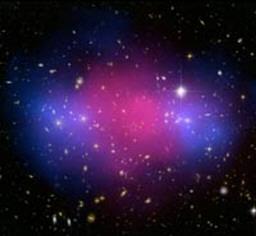An Italian-led space mission may have collected the first concrete evidence of dark matter, according to scientists.
A highly sensitive detector launched in 2006 to study cosmic rays has recorded an unexpected abundance of positrons, the antimatter counterpart of the electron, which may be left behind when dark matter is destroyed.
''This is a fantastic result,'' said research coordinator Piergiorgio Picozza of the National Institute of Nuclear Physics of the breakthrough to be published in Nature.
''It's the first real evidence of the possibility of dark matter, although it's still necessary to collect further data''.
Further research will need to exclude other possible sources of the positrons, such as spinning stars called pulsars that emit electromagnetic radiation, or cosmic rays impacting with atoms.
But Picozza said he was ''hopeful'' that other sources would be ruled out.
Dark matter is the hypothetical, invisible matter believed by astrophysicists to account for around 23% of the universe, and whose presence is inferred from gravitational effects on visible matter.
Visible matter, which makes up the stars and planets, comprises just 4-5% of the universe, while the remaining 72% is dark energy, a hypothetical energy form that some cosmologists say is behind the accelerating rate of the expansion of the universe.
Picozza and his team used data from the Pamela (Payload for Antimatter Matter Exploration and Light-nuclei Astrophysics) satellite, which is a joint initiative between Italy, Germany, Sweden and Russia.









